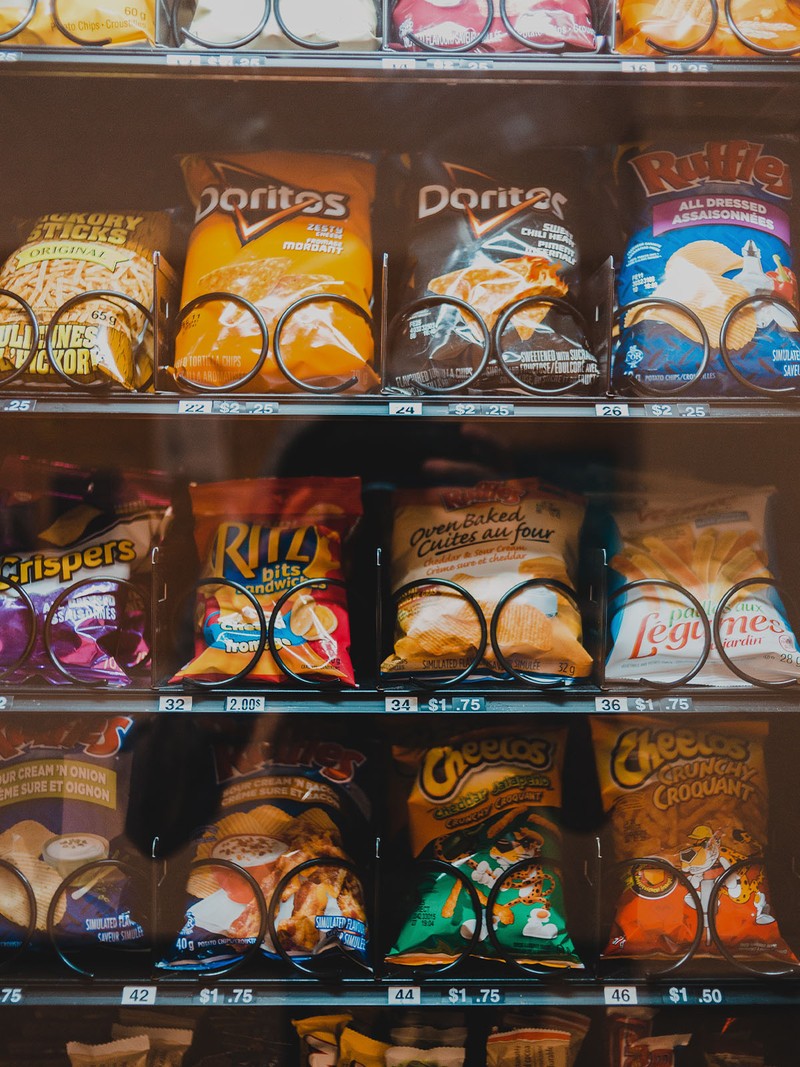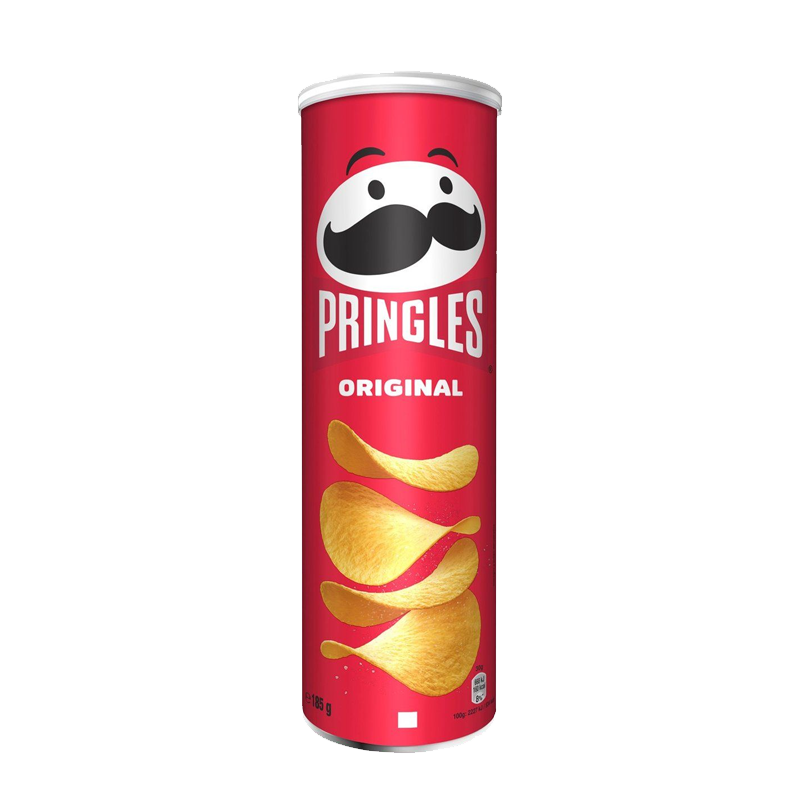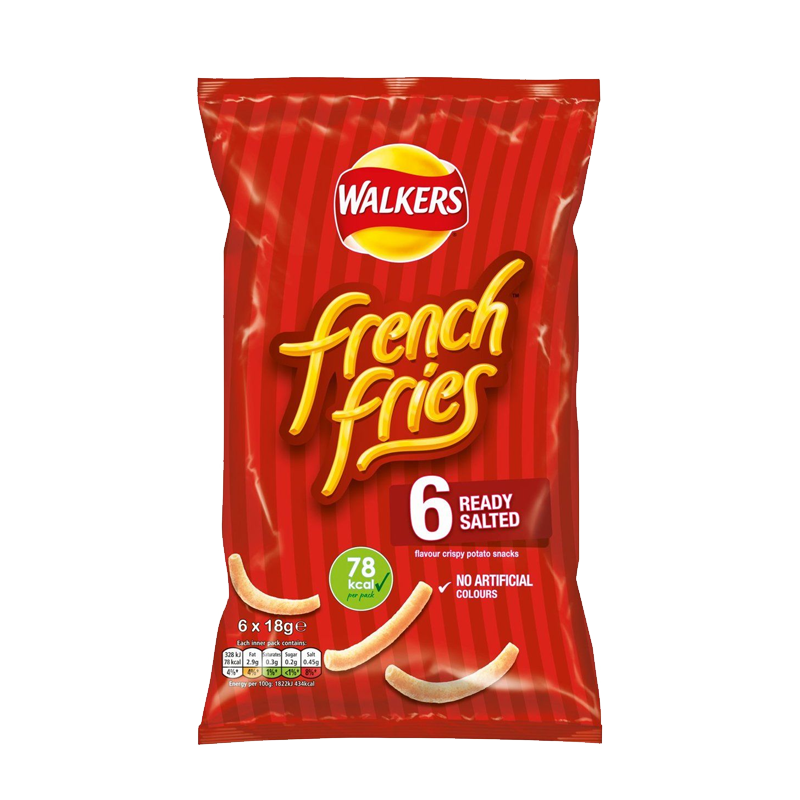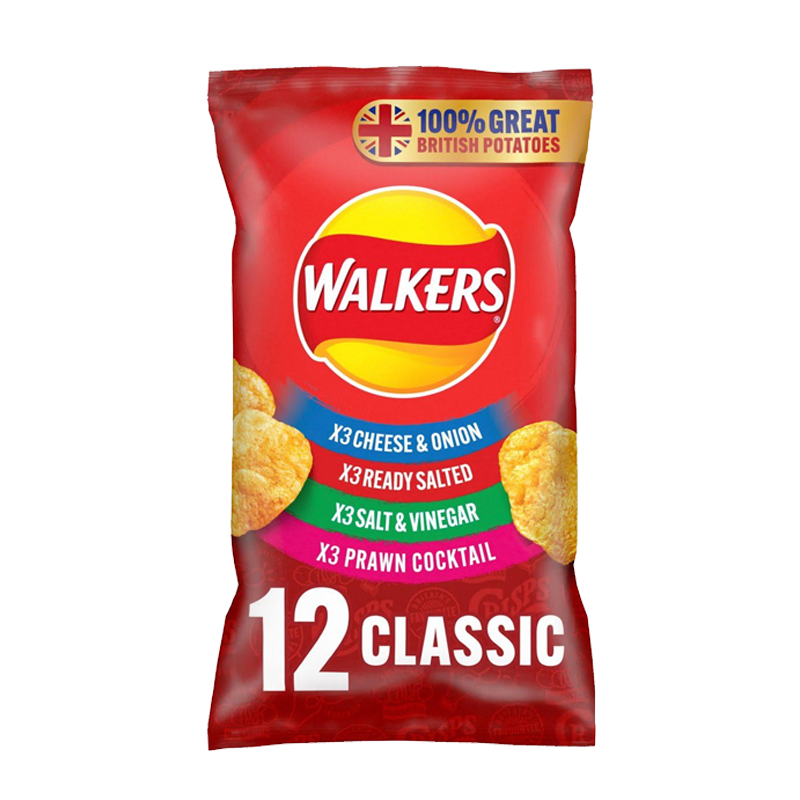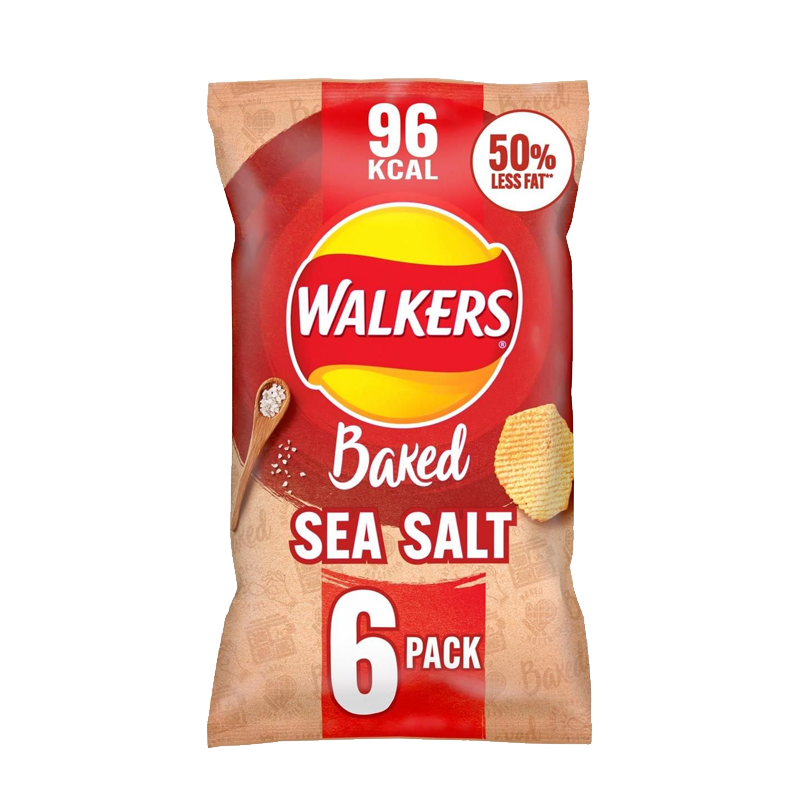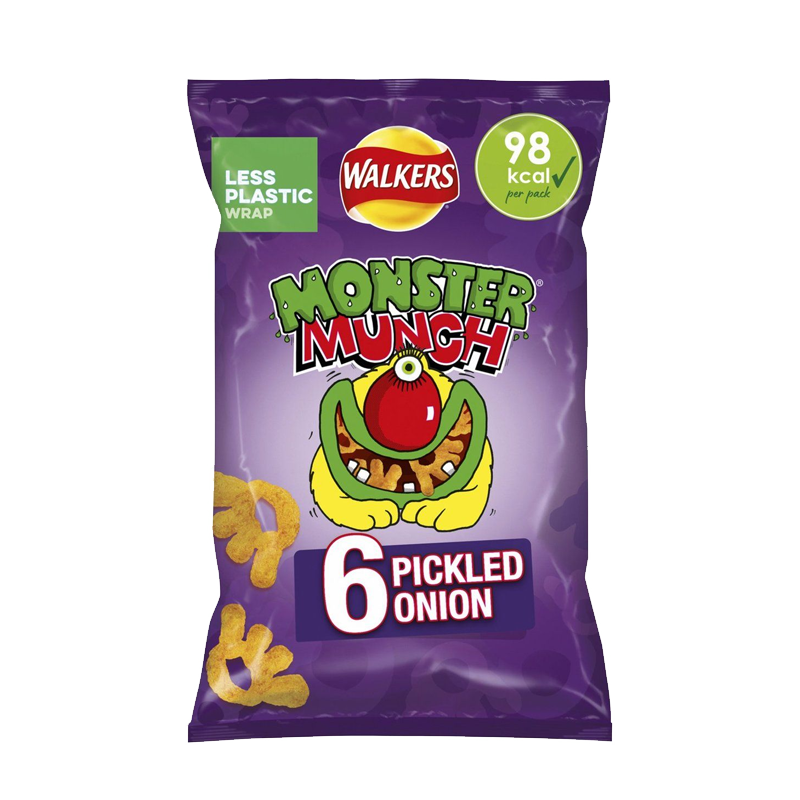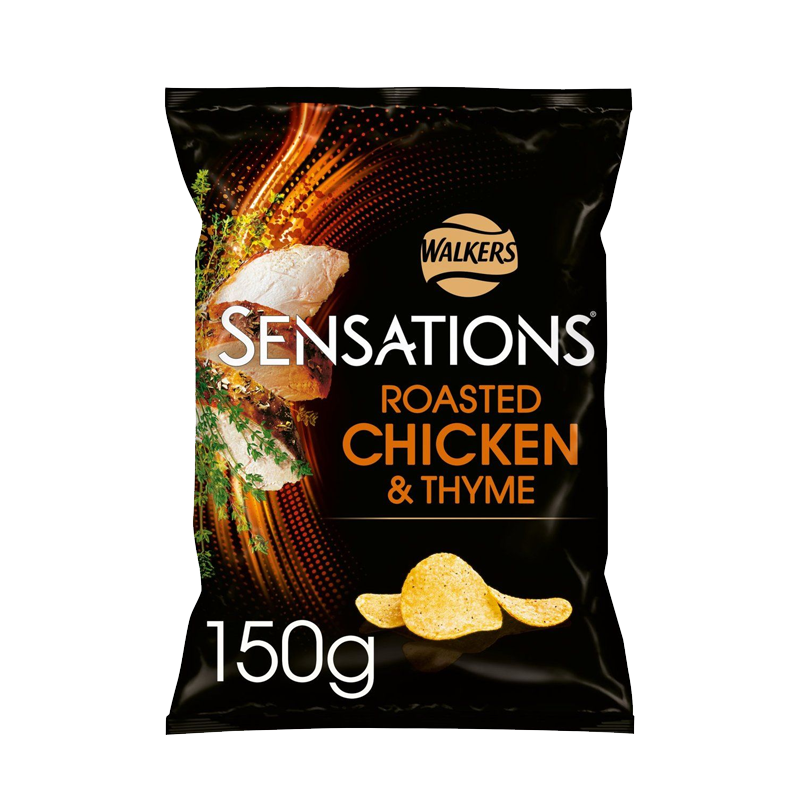A Nutritionist’s Guide To Crisps
Size Matters
“It’s no secret the average packet of crisps isn’t nutritious. Crisps are high in calories, saturated fat and salt, and low in protein, fibre and other essential nutrients. Clearly, we all know how addictive they are – and the more you eat, the more calories, fat and sodium you’re ingesting. Avoid eating straight from a sharing bag, as this will pretty much always lead to mindless eating. Pay attention to the recommended serving size and use smaller plates or bowls to create the illusion of a more substantial portion. Pair with hummus or a high-protein Greek yoghurt dip to help you feel satisfied with a smaller portion.” – Clarissa Lenherr, nutritionist
Keep It Simple
“In general, plain flavours like ready salted or salt and vinegar are less processed than complex flavours. For example, salted crisps tend to just contain potatoes, oil and salt, whereas flavoured crisps – like Walkers Sensations – can contain more than ten ingredients, including artificial flavours, flavour enhancers, emulsifiers and additives.” – Clarissa
“Crisps like Monster Munch and McCoy’s are full of artificial flavourings to achieve a specific flavour profile. Many contain MSG, which many of us are sensitive to – it can cause headaches. On the flip side, Torres’s crisps may be fancy, but they’re made with just potatoes, olive oil and salt, which is a far healthier combination.” – Sophie Trotman, nutritionist
Don’t Fall For Vegetable Crisps…
“Vegetable crisps are often marketed as a healthier alternative, but crisps are crisps, even if they are made from vegetables. They’ll still contain high amounts of salt, fat and saturated fat. In fact, Kettle Chips’ vegetable crisps contain higher levels of saturated fat than its regular salted version. They do, however, have double the amount of fibre, but you shouldn’t be focused on getting your fibre from crisps. If you are a fan of veggie crisps, try Emily Veg Crisps, with just three ingredients and a small amount of oil.” – Clarissa
“Vegetable crisps don’t count as one of your five-a-day, so don’t think they’re a healthy option. Most of the vitamins are destroyed in the heating process.” – Rachael, PT & founder of It’s So Simple
…Or Low-Fat Options
“To compensate for the reduced fat content and to maintain flavour, some low-fat crisps often have even higher levels of sugar, artificial additives and salt. For example, Walkers Baked crisps contain less saturated fat, but more sugar per serving than their full-fat counterpart. At the same time, some people find low-fat crisps don’t have the same taste or texture as regular crisps, which affects overall satisfaction, meaning you eat more. Low-fat crisps are still a processed food.” – Clarissa
“Low-fat crisps may seem like an obvious option, but read the label, as the caloric difference between regular and reduced-fat crisps might not be as significant as you’d expect.” – Sophie
There Are Good Calories & Bad Calories
“There are several crisp brands that state clearly on the packet that they contain under 100 calories per serving. While this may be tempting, it’s important to understand these are empty calories – i.e. they provide zero nutrition. Pom-Bears are a good example – a bag contains just 65 calories because they have used potato starch instead of sliced potatoes to reduce the fat content. However, they still contain inflammatory oils, sugar, salt and emulsifiers to create flavour, so they’re by no means a healthy choice.” – Sophie
And here the nutritionists share their verdicts on nine popular varieties…
Pringles
“Of all the crisp varieties, Pringles are nutritionally the worst. A 30g portion is around 13 crisps – for this small amount, they are highly calorific and hold zero nutritional value. There’s barely any protein per portion to keep you sated, and they’re highly processed with maltodextrin, emulsifier and colourings. They also use dehydrated potatoes, which means all the water has been taken out. This, combined with the added salt, tricks you into eating more.” – Rachael
Walkers French Fries
“With 78 calories and just 3g of fat per portion, these are a lighter option, largely due to both the formulation and the fact the portion sizes are smaller. However, they contain MSG, which can cause headaches in some people, and they’re fried in sunflower oil, which is highly inflammatory for the body.” – Sophie
“French Fries contain zero protein. If you’re hungry, they won’t fill you up at all.” – Rachael
Doritos
“Regardless of the flavour you choose, Doritos are particularly high in artificial flavourings, as well as being high in carbohydrates, fat and calories.” – Sophie
“Doritos have one of the longest ingredients lists when it comes to crisps. They contain endless artificial additives like MSG and numerous flavour enhancers which are chemically formed. Plus, depending on the flavour you choose, there might be added sugar.” – Clarissa
McCoy’s
“McCoy’s are known for their complex flavours, but surprisingly they are lower in artificial flavourings than the rest. The cheddar and onion flavour, for example, uses just dried onion, yeast extract, whey and cheese. Of course, there are also unfavourable ingredients like sunflower oil, and they’re high in fat, calories and carbs, but in terms of artificial flavours, there are worse options.” – Sophie
Skips
“Skips are the best of a bad bunch. With 71 calories per bag, they’re a decent option, although they still contain minimal protein, which is something that should be considered with any snack. Even though the calories are low, they also contain flavourings, sugar and a high amount of salt. These might be better than other crisp options, but it still doesn’t make them a quality product.” – Rachael
“Although not the most nutritious snack, Skips don’t contain any artificial colours or MSG. They’re made with tapioca starch that is naturally gluten free, although they still lack fibre to keep blood sugar balanced.” – Clarissa
Walkers Multipack
“There are different flavours in this pack and therefore varying nutritional profiles. The pack with the least number of artificial flavourings is ready salted, which contains potatoes, rapeseed oil and salt. The cheese and onion, and prawn cocktail flavours contain far more artificial ingredients. They are all high in salt, with around 7g per pack.” – Sophie
Walkers Baked Crisps
“These are a light option with under 100 calories per pack. However, the carb content is like that of other crisps, and they contain sugar, as well as rapeseed and sunflower oils, both of which are inflammatory for the body. However, out of all the options, these would be my top pick.” – Sophie
Monster Munch
“The ingredients list here is minimal, but some of the ingredients are questionable. For example, the potatoes are cooked in inflammatory sunflower oil, and the seasonings are listed as ‘flavourings’, which could mean anything. However, they are made without MSG or artificial colours.” – Sophie
Walkers Sensations
“These crisps are known for their rich flavour, which is reflected in the long list of ingredients. Although the chicken content is minimal, the protein per serving is higher than other crisps – around 2g per serving. However, this increase isn’t enough to justify opting for these to hit your protein target.” – Sophie
For more nutritional advice, visit SophieTrotmanNutrition.com & ClarissaLenherr.com – and follow @ItsSoSimple_RS on Instagram
DISCLAIMER: Features published by SLMan are not intended to treat, diagnose, cure or prevent any disease. Always seek the advice of your GP or another qualified healthcare provider for any questions you have regarding a medical condition, and before undertaking any diet, exercise or other health-related programme.
DISCLAIMER: We endeavour to always credit the correct original source of every image we use. If you think a credit may be incorrect, please contact us at [email protected].
